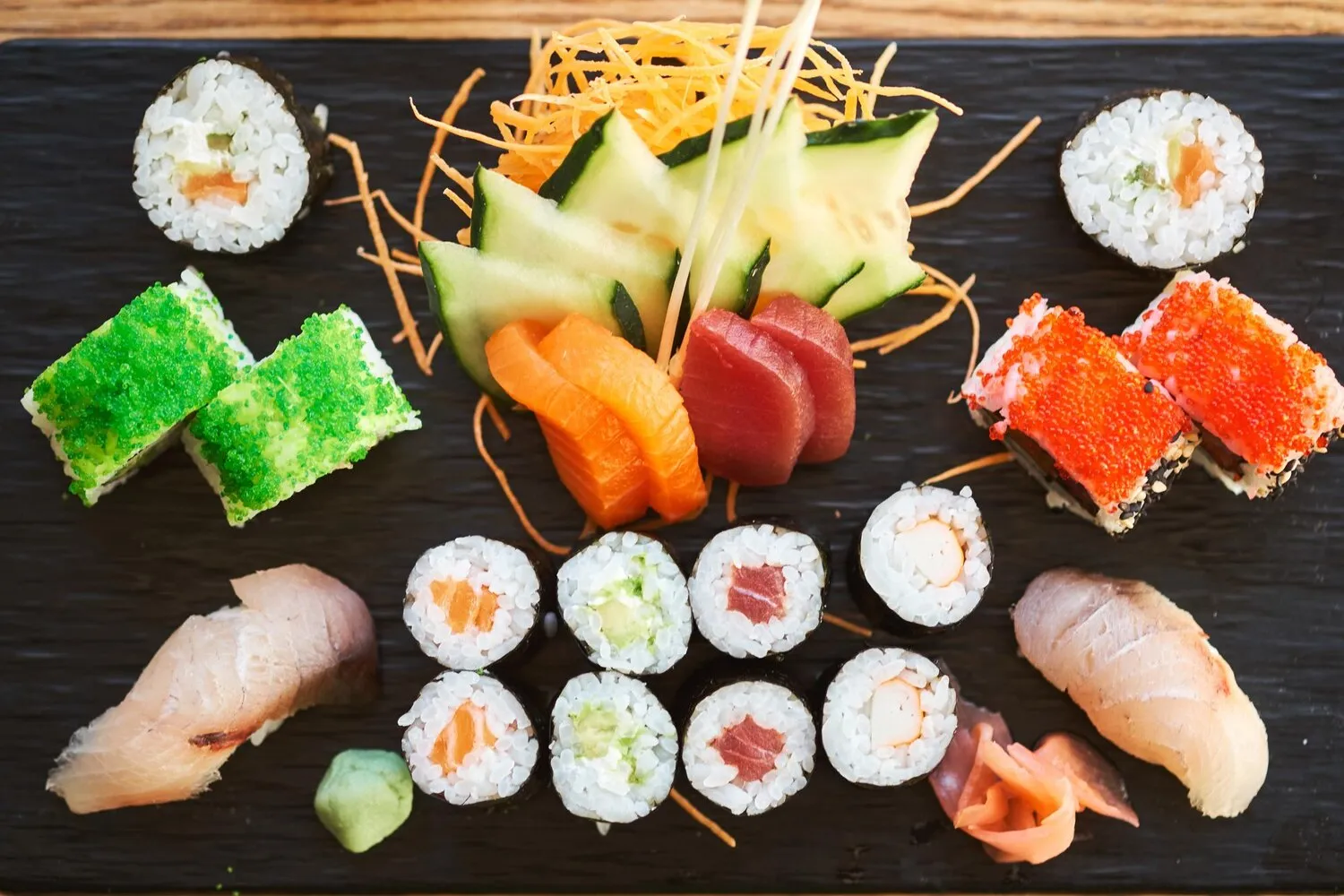
Sushi Combinations
Nomiya Sushi Bar offers various sushi combinations featuring a selection of nigiri, sashimi, maki, and other sushi specialties.
Nutrition Facts
* The % Daily Value (DV) tells you how much a nutrient in a serving of food contributes to a daily diet. 2,000 calories a day is used for general nutrition advice.
Nomiya Sushi Bar
Sushi's origins can be traced back to Southeast Asia, where fish was preserved in fermented rice. This practice spread to Japan, evolving over centuries. In the Edo period (1603-1868), nigiri sushi, the hand-pressed style we know today, was popularized in Tokyo (then Edo). Sushi combinations are a modern development, allowing diners to sample a variety of flavors and textures.
Sushi is deeply ingrained in Japanese culture, representing artistry, precision, and respect for ingredients.
Presentation
Sushi is meticulously prepared and presented, reflecting Japanese aesthetics and attention to detail. The arrangement of the sushi in a combination is carefully considered for visual appeal.
Etiquette
There are certain etiquette guidelines for eating sushi, such as using chopsticks correctly or dipping the fish, not the rice, into soy sauce. While these rules are becoming more relaxed in some contexts, they highlight the cultural significance of sushi.
Seasonal Ingredients
Traditional sushi emphasizes the use of seasonal ingredients, reflecting the Japanese appreciation for nature's bounty. Nomiya Sushi Bar might highlight seasonal fish in their combinations.
Sushi combinations offer a diverse range of flavors, balancing umami, sweetness, acidity, and saltiness.
The core flavor profile relies on umami from the fish and seasoned rice. Different types of fish, such as tuna (maguro), salmon (sake), and yellowtail (hamachi), offer distinct umami profiles. Pickled ginger (gari) provides a sharp, sweet, and slightly spicy palate cleanser. Wasabi adds a pungent heat, while soy sauce contributes saltiness and further enhances the umami. Sweetness often comes from the rice vinegar in the sushi rice. Nomiya Sushi Bar likely incorporates these classic flavors along with other regional and fusion elements in their combinations.
Start with Lighter Flavors
Begin with lighter-flavored fish, such as white fish or salmon, before moving on to richer options like tuna or mackerel. This allows you to better appreciate the subtle nuances of each piece.
Use Ginger as a Palate Cleanser
Eat a small piece of ginger between different types of sushi to cleanse your palate and prevent the flavors from blending together.
Soy Sauce Usage
Dip the fish side of the sushi lightly into soy sauce. Over-soaking the rice can mask the delicate flavors of the fish and make the sushi too salty.
Freshness Matters
Choose sushi from a reputable establishment like Nomiya Sushi Bar, which prioritizes the freshness and quality of its ingredients for the best flavor and safety.
Explore additional Japanese dishes and restaurants
Explore JapaneseDiscover top dining spots and culinary experiences in Viseu.
Explore ViseuLearn more about the food culture, restaurant scene, and culinary heritage of Portugal.
Explore Portugal